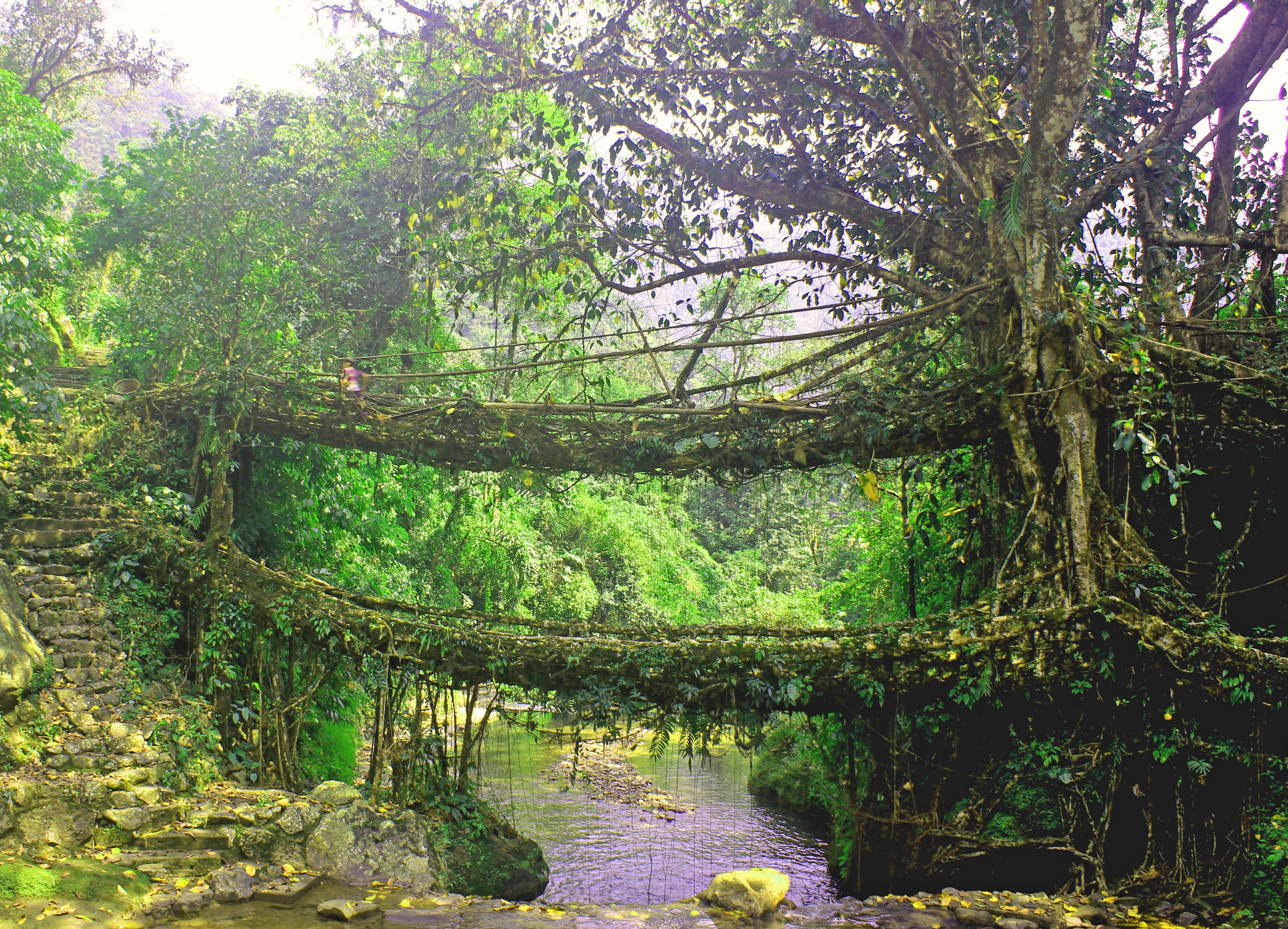A Day at the Lesser-Known Living Root Bridge of North-East
The Living Root bridges hold a special place whenever one refers to their list of doing touristy things in the North-East. But, amongst all the Root Bridges in Meghalaya, the most commonly visited Living Root Bridge is the double-decker one in Cherrapunjee. Therefore, it comes as a surprise to many tourists, like me and my group, when they discover a lesser-known, but an equally fascinating Living Root Bridge in the same North Eastern state.
What’s so Unique About Living Root Bridges?
The intriguing characteristic about these Root Bridges, that lures tourists from all over, is that they are made of roots of living rubber trees. According to a widely held belief, the roots with which these bridges are made can renew themselves. Thus, the tough and sturdy roots have been used for building bridges by many tribes of the North East.
The Trip
So, the Living Root Bridge we chose was in the Nohwet village of Meghalaya. Honestly, just like most tourists, our first choice was also the popular double-decker Root Bridge in Cherrapunjee. However, our tight schedule didn’t leave much room for Cherrapunjee in our itinerary.
Since we were road tripping through Meghalaya, we started our journey from Shillong early in the morning. Nohwet village became our second halt point after Dawki village. From there, it was only an hour-long ride to this beautiful and well-structured village.
Hungry as a bear, the first thing we decided to do after reaching Nohwet was to hog onto anything that looked like food. Soon, an adorable little house with a thatched roof caught our attention because of the board outside its wall that read ‘Chicken & Rice’. Without wasting much time, we went inside and were swiftly served rice along with some homemade chicken and dal and surprisingly, this meal costed us only Rs. 150 for four people.
Image Source: Wikimedia Commons
The Living Root Bridge was a few minutes’ walk from the village. The rocky path to the Bridge was adorned by small shops selling refreshments, fruits and even bamboo artifacts. The path that leads to the bridge is not particularly an easy one and requires a good amount of attentiveness. But, everything feels like worth the challenging work when you reach the Living Root Bridge.
The Thyllong river flows beneath the bridge and the sound of its flowing water soothes the senses as soon as you start approaching the bridge. At the time of our visit (in January), the very little amount of water in the river made it look more like a very small ravine. But, according to the locals, the monsoons fill the river with so much water that it would get impossible for the villagers to cross it without the bridge. A nominal amount of Rs. 20 is charged for the entry to the Living Root Bridge, which is still a place of regular use for the locals.
Despite having several other nearby places to visit on the itinerary, we were glued to the mesmerizing beauty of the place. The low water flow in the river gave us an opportunity to enjoy the rocks and gaze at the bridge and its gorgeous surroundings.
With feet dipped in the cold, refreshing water of Thyllong river, we spent hours at the Living Root Bridge before leaving the place to explore the interiors of Nohwet village.
The Interiors of Nohwet Village
On a special recommendation of a friend, after spending a substantial amount of time at the Root Bridge, we went to explore the interiors of the village. And surprisingly, the tour to the interiors of Nohwet village turned out to be a one of its kind.
A long, tiring walk to the village ended at a view that was refreshingly beautiful. A really tall bamboo shed, built by the villagers, welcomed us to the village and promised a view which would make our jaws drop on the floor. Climbing the shed required a lot of flexibility and stamina, yet we didn’t give up. With a hope to find something spectacular, we started scaling the shed which surely felt rickety more than just a couple of times.
After climbing for a few minutes, we reached the top and there we were, witnessing a view that took our breath away. A view that looked straight out of a fairytale, thus making all the hard-work worth the time and effort.
Quick Tips
- Shillong to Nohwet Village Distance: 76 km
- Dawki to Nohwet Village Distance: 33 km
- Where to head next: Mawlynnong Village (2.2 km)
- Carry a pair of running shoes because of all the uneven surfaces that you may have to scale
- Leaving early from your starting is always advisable. The place is best explored in broad daylight.
- Do visit Mawlynnong Village, the cleanest village in Asia. Mawlynnong is only 2 km from Nohwet, thus you can easily include in your day’s plan


